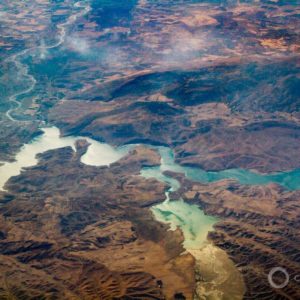The Stream, June 22: Sediment Released By Dam Removals Revives Coastal Areas
The Global Rundown
A growing global movement to remove dams is helping to revive coastal areas long deprived of sediment. As California’s Salton Sea shrinks and restoration efforts face funding shortfalls, an asthma crisis is worsening. Glaciers at the headwaters of the Brahmaputra river are losing less ice each year than previously thought. In Bolivia, scientists are transporting ice samples from melting glaciers to Antarctica for further study. Refugees returning to Nigeria face inadequate water and sanitation services, raising the risk of disease. A plan proposed by Brazil’s mining ministry could open up border areas to foreign mining, a move opponents say would harm the region’s water, forests, and people.
“Sediment allows coastal habitat to grow, adapt, and maintain itself while sea levels change. It’s almost like it’s the food — the nutrients, minerals, and vitamins — these systems need to grow and adapt, and we are starving them of that.” –Robin Grossinger, a senior scientist with the San Francisco Estuary Institute, commenting on the benefits of the sediment delivered downstream by rivers. While dams around the world keep a massive amount of sediment from reaching coastal areas, a growing movement to remove them could reverse that trend. (Yale Environment 360)
In context: U.S. Interior Department supports Klamath dam removal.
By The Numbers
24,281 hectares Area of lakebed researchers expect will become exposed over the next decade as California’s Salton Sea shrinks. As a result, already high rates of asthma in surrounding communities will likely climb higher. The Desert Sun
1.7 million square kilometers Extent of Brazil’s Amazon biome included in a plan to open up border areas to mining by foreign companies. Opponents of the plan worry it could harm the region’s forests, water, and indigenous communities. Bloomberg
Science, Studies, And Reports
Glaciers on the Qinghai-Tibet Plateau at the headwaters of the Brahmaputra river are melting at one-third of the rate previously thought, according to a study published in the journal Water Resources Research. Still, the glaciers lost 28.8 billion cubic meters of ice between 2003 and 2014. The Third Pole
Scientists have removed 75 ice samples from a glacier on Illimani Mountain in Bolivia, which is at risk of melting as climate change warms the Andes. The samples will be stored in Antarctica so researchers can study the climatic data they contain. Reuters
On The Radar
Officials with the United Nations refugee agency warn that water and sanitation services are inadequate in the Nigerian border towns where refugees are attempting to return, increasing the risk of disease as the rainy season begins. More than 1.9 million Nigerians have been displaced in the country’s northeast region by Boko Haram. Reuters
A news correspondent for Circle of Blue based out of Hawaii. She writes The Stream, Circle of Blue’s daily digest of international water news trends. Her interests include food security, ecology and the Great Lakes.
Contact Codi Kozacek





